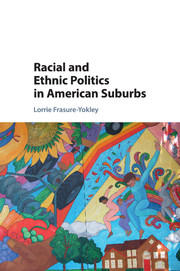Book contents
- Racial and Ethnic Politics in American Suburbs
- Racial and Ethnic Politics in American Suburbs
- Copyright page
- Dedication
- Frontispiece
- Contents
- Figures
- Tables
- Book part
- Introduction
- 1 Race, Ethnicity, Class, and the Suburban Political Economy Dilemma
- 2 New Neighbors in Suburban Washington, DC
- 3 Educating Immigrant, Minority, and Low-Income Students in Suburbia
- 4 The Politics of Institutionalizing Day Labor Centers in Suburbia
- 5 Lost in Translation
- Conclusion
- Appendices
- References
- Index
- References
References
Published online by Cambridge University Press: 05 December 2015
- Racial and Ethnic Politics in American Suburbs
- Racial and Ethnic Politics in American Suburbs
- Copyright page
- Dedication
- Frontispiece
- Contents
- Figures
- Tables
- Book part
- Introduction
- 1 Race, Ethnicity, Class, and the Suburban Political Economy Dilemma
- 2 New Neighbors in Suburban Washington, DC
- 3 Educating Immigrant, Minority, and Low-Income Students in Suburbia
- 4 The Politics of Institutionalizing Day Labor Centers in Suburbia
- 5 Lost in Translation
- Conclusion
- Appendices
- References
- Index
- References
- Type
- Chapter
- Information
- Racial and Ethnic Politics in American Suburbs , pp. 155 - 174Publisher: Cambridge University PressPrint publication year: 2015



